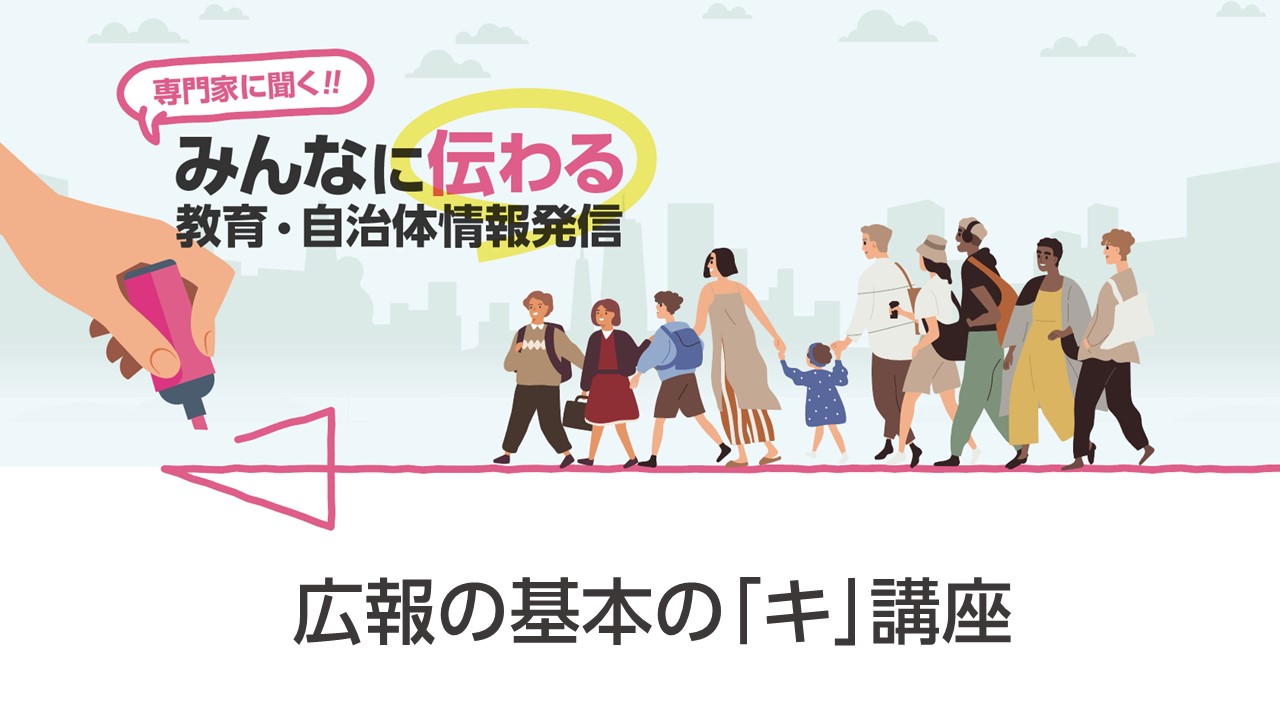
In order to create a society where people can coexist, it is important to provide a diverse range of people with high-quality education and to ensure that they receive the information they need to live.At the online event held at the end of May 2022, Education Day focused on the acquisition of languages other than one's native language and universal design fonts, while Local Government Day focused on themes of local government public relations and a society where people can coexist, and various guest lectures were given by experts from various industries.
This time, we will report on the "Basics of Public Relations Course" held on Tuesday, May 31st, featuring lecturer Sakuma Tomoyuki, a former local government public relations officer who now works as a local government public relations advisor.
In addition to covering the basics of local government public relations, he also gave a talk titled "Learning the Basics of Design with PowerPoint," in which he also gave advice on how to actually use the application.
Seminar Report
Satisfaction with the seminar
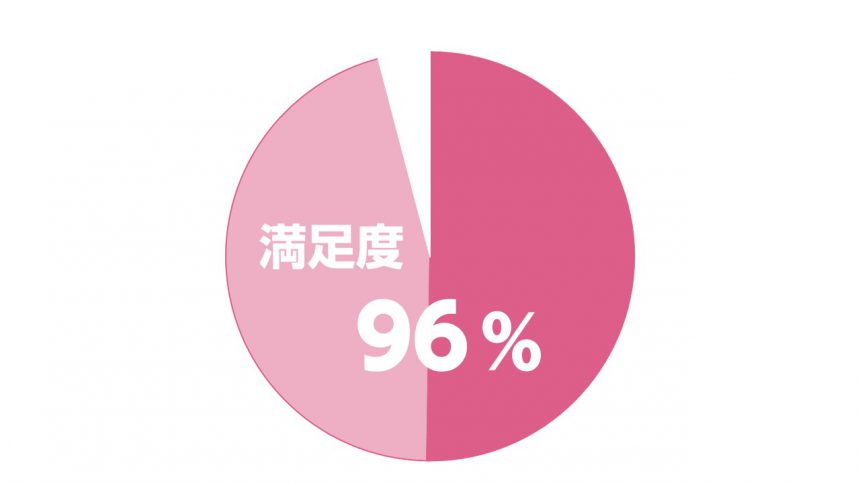
Participant comments

I once again decided to focus on providing public relations that is close to the residents and that communicates with them.

I would also like to know how to use different fonts and more practical, advanced techniques.

It was very easy to understand and I discovered a lot.I'm glad I was able to take this course soon after becoming a public relations officer. It made me think carefully about how I communicate.thank you very much.
Seminar Contents
"The Basics of Public Relations"

Representative Director, PRDESIGN JAPAN Co., Ltd.
Tomoyuki SakumaTomoyuki Sakuma
Public relations is not just about sending out information (output) in a one-way manner, but it is also important to listen to the opinions and thoughts of residents (input). Even if a local government thinks it is "providing information properly," it is important that the residents who receive it areIf you feel that the information is too full of text and difficult to understand, then the information is essentially non-existent.
In other words"To communicate" and "to be understood" are differentThat is to say, even if you communicate information, it does not necessarily mean that it will be "received," so you need to be creative. In particular, it is important to go back to basics and ask yourself, "Who is this information for?" and "What is the purpose of this information?"
The Act on the Elimination of Discrimination against Persons with Disabilities came into effect in 2016, and the adoption of universal design (UD) for information is progressing. For example, UD fonts are designed with consideration to reduce misinterpretation. However, UD fonts are by no means a panacea. If used incorrectly, they can be difficult to read, such as with too tight line spacing or incorrect usage, so they must be used appropriately.
In the future, consideration for foreigners will also be necessary. For example, the app Catalog Pocket provided by Morisawa automatically translates PDF data created in Japanese and supports 10 languages. It also has a reading function, making it an easy-to-use tool for people with visual impairments.
※If you are interested in Catalog Pocket, which was also introduced by Mr. Sakuma,Here
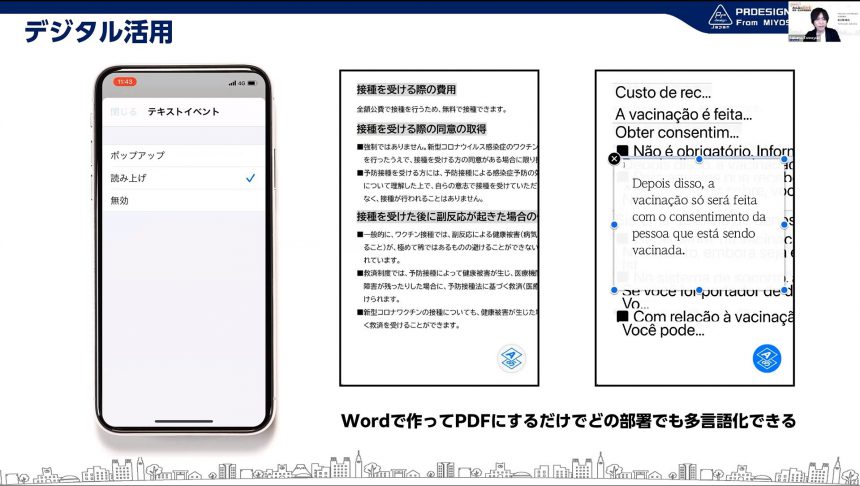
If misunderstandings and complaints can be prevented, there will be fewer inquiries at the counter and over the phone, which will create a virtuous cycle of reduced workload.I think it would be good to use various methods and tools effectively to create public relations that get the message across. It is very important to listen to the public rather than just creating the information and leaving it at that.
"Learn the Basics of Design with PowerPoint"
There are various elements to make a design easy to see, such as color consistency and contrast, and by adjusting these, you can create a design that looks good even in PowerPoint. Here we will introduce it in five easy steps.
STEP 1 "Aims, goals, targets"
Take another look at who you are communicating with and what you are communicating with them, and whether you are providing too much information.
STEP 2: "Gather materials"
Prepare free materials and organize information such as the date, time, and location of the event.
STEP 3 "Heading"
Headlines should not be sentences, but should be catchy enough to convey information instantly.
STEP 4 "Layout"
We recommend a 7:3 layout. If the layout is vertical, place photos and illustrations in the top 70% and text information in the bottom 30%. People have a tendency to look from above, so placing visuals at the top will catch their eye and make it easier for them to read the information below.
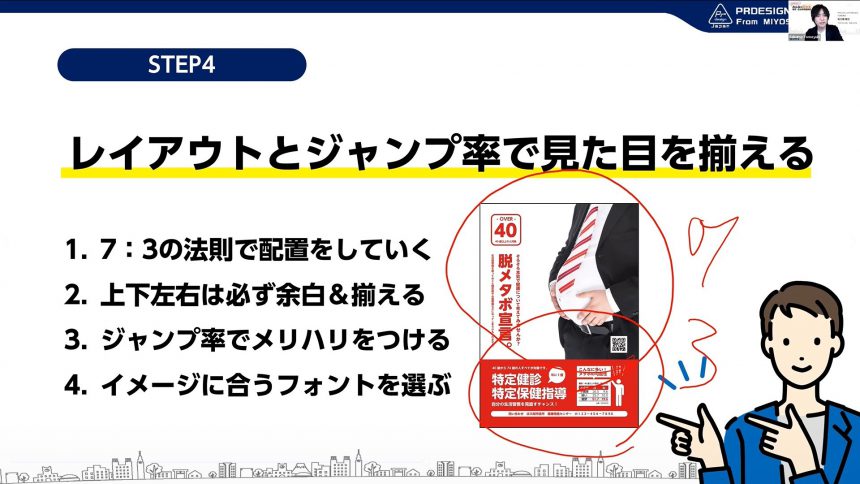
STEP 5 "Color scheme and decoration"
By limiting the number of colors to three and varying the density of each, a sense of unity and contrast can be achieved. Also, by aligning the top, bottom, left, and right edges, it looks better.
Question Corner
On the day, we used the chat function to accept questions from participants. Many questions were asked, demonstrating the high level of interest among the participants.

How do I choose a color?

Pastel colors are recommended for a softer look!

How did you teach yourself design and photography?

If I had a question, I would search it on Google and save images of anything that caught my eye.
What was impressive was how Sakuma gave clear and precise answers to each question.
Mr. Sakuma is also scheduled to speak at an upcoming Morisawa Planning Seminar about creating public relations materials using Office apps.
This seminar is recommended for people who say, "I've become a public relations professional, but I don't have anyone to consult with about production," "I want to know tips for creating flyers and press releases using Office," "I create company newsletters, PTA newsletters, and school newsletters," or "I want to create public relations materials using UD fonts."
Don't miss this chance to learn practically directly from Mr. Sakuma!
For detailsHerePlease check here.
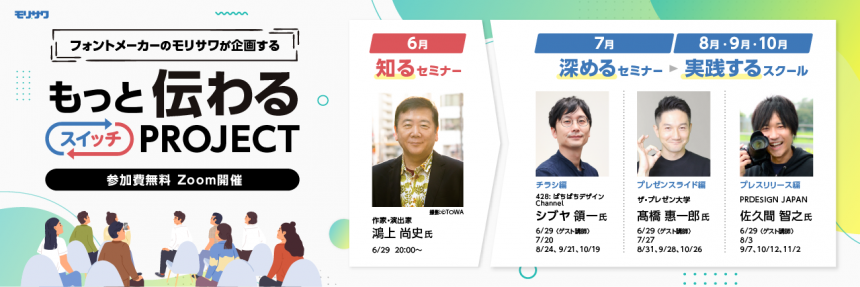

Tomoyuki Sakuma Mr.
PRDESIGN JAPAN Co., Ltd.Representative Director. PR TIMES Evangelist. Regional Strength Creation Advisor to the Ministry of Internal Affairs and Communications. Member of the Ministry of Health, Labor and Welfare's Pension Public Relations Review Committee. Visiting Researcher at Waseda University's Manifesto Research Institute. A former civil servant, he won the Prime Minister's Award at the National Public Relations Competition while still in office. He currently works as a public relations advisor to local governments and as a training instructor in public relations, PR and design.Easy to use with Office! How to create a "single-page design" for civil servantsHe has written many books, including ``'' (Gakuyo Shobo).
If you are interested in solving problems facing local governments or considering using UD fonts, please feel free to contact us using the form below.

